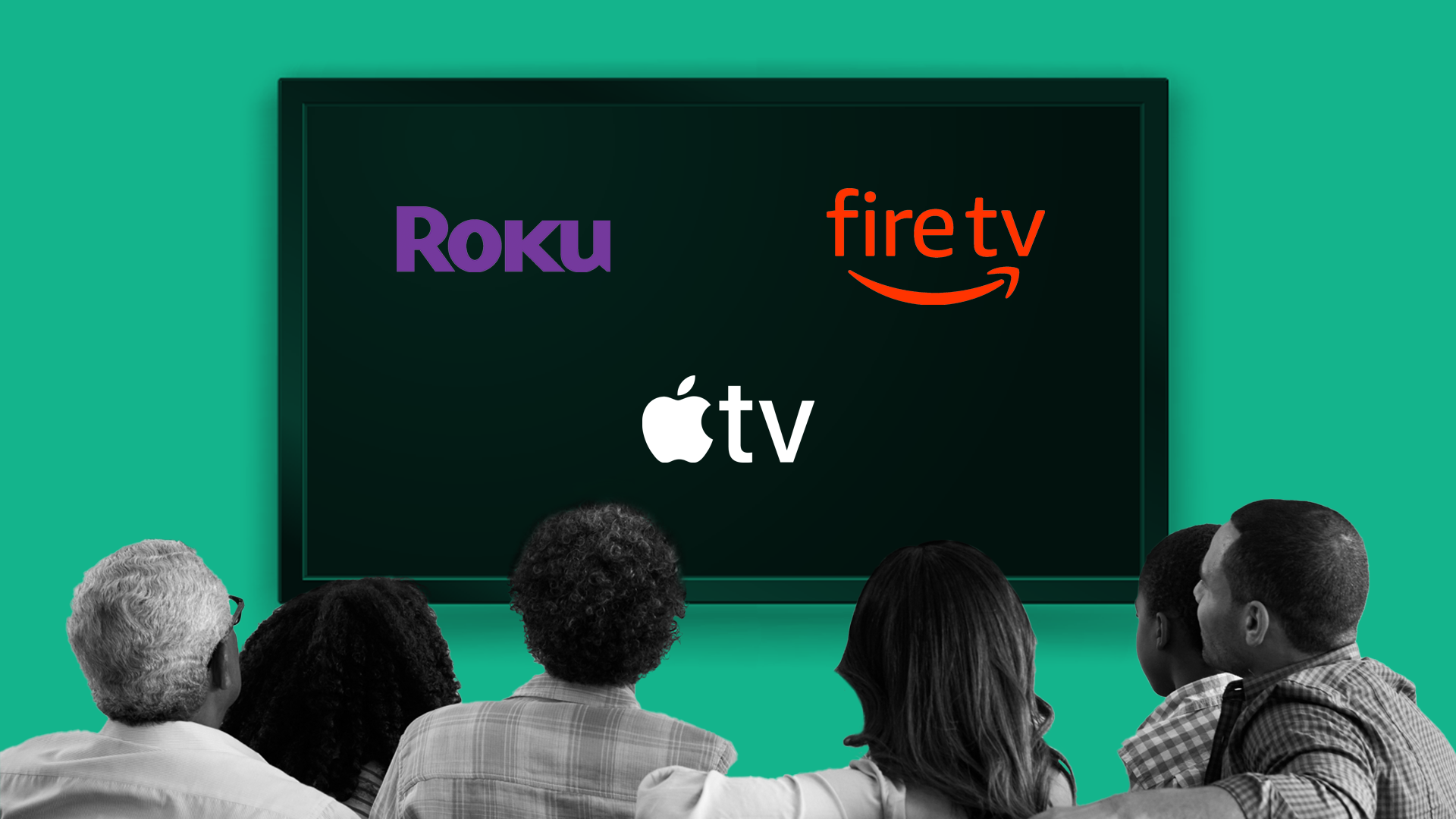What Is CTV?
“What is CTV?” Or “What is Connected TV?” A Connected TV “CTV” definition refers to a television set having the ability to connect via an online network. The CTV acronym means connected television.
Comparatively, traditional televisions can’t connect to the internet. Instead, any programming displayed on the television will be delivered via a satellite, antenna, or cable connection. A Connected TV can go online either through built-in technology or an external device, such as a Firestick.
Connected TV vs smart TV falls under the categories. Smart TVs are produced by electronics manufacturers such as Samsung, Sony, and Panasonic. When the individual loads an application, such as Hulu or Peacock, onto the Smart TV, the family can stream movies and television programs. Connected TVs not only include smart TVs, but also televisions that go online through gaming consoles and dedicated streaming devices, as well as desktops, tablets, and mobile phones.
Connected TV Advertising
What does CTV stand for in media? Connected TV advertising has changed the game for marketers because many households have altered their viewing habits due to streaming platforms. CTV has a direct link to the trend of cord-cutting. Cord-cutting households no longer rely on traditional cable and satellite providers to watch television. Instead, families pay streaming fees to access programming. With a Connected TV, each user can access what’s known as over-the-top (OTT) content.
OTT content is accessible not only through a Connected TV device, but also on mobile devices, computers, and laptops. There are an estimated 1 billion Connected TV devices and OTT devices in US households.
With such a significant number of users watching television in this manner, advertisers need to look away from traditional network commercials. Instead, larger percentages of their media budgets should be dedicated to Connected TV advertising.
Connected TV Companies
Connected TV providers are responsible for designing, manufacturing, and releasing technology that makes it possible to access the internet through a television set.
Examples of CTV companies include those that produce smart televisions, gaming consoles, and streaming devices. Most of the top names in electronics are also Connected TV companies, such as LG, Android TV, Samsung, Sony, and Vizio. Streaming devices used to connect a television to the internet are made by companies such as Apple, Roku, and Amazon. Gaming consoles also have the option to stream OTT content with manufacturers that include Microsoft, Sony, and Nintendo.
CTV advertising platforms should be evaluated to determine how to bid and get ads displayed to the right audience. Examples of CTV advertisers include agencies like Keynes where our campaign setup and bidding process differ from other CTV advertising companies. Some CTV advertising platforms offer public bidding options, while others limit bids to invited users.
Connected TV Vs OTT
Connected TV vs OTT is used interchangeably. However, OTT vs CTV isn’t the same. OTT means “over-the-top“. Although connected televisions can display OTT content, a Connected TV device isn’t required for streaming. A CTV is more of a subcategory of OTT programming and is used for viewing digital content.
In advertising, OTT refers to the method used to deliver content to users. A closed system isn’t required for streaming OTT content. The viewer doesn’t need a subscription to a cable or satellite provider. Instead, an internet connection will be utilized to access any programming. OTT service providers include Hulu, Peacock, and HBO Max.
In comparison, CTV refers to a television that can stream OTT content. The Connected TV device can be powered independently through a television set or an external CTV device. For instance, if a viewer watches Hulu on television on Roku, the person is streaming OTT media over a CTV device.
Due to the differences, CTV media buying won’t be the same process as OTT media buying. CTV ads can be purchased programmatically. The Connected TV ads can be run on a channel but will be served over the top.
Connected TV vs Linear TV
CTV vs linear TV is the main comparison within the industry. But, what is linear TV and how does it compare to OTT/CTV options? Linear TV refers to the traditional way of watching television programming. The person tunes into a channel at the scheduled time of the program. For instance, the viewer watches a reality TV show on ABC every Monday at 8:00 pm. Linear TV providers create a schedule with certain programs played on select days and times.
However, linear TV providers have broadened their reach by creating applications to stream OTT programs. Discovery Channel, NBC, and ABC are just a few examples of providers who have both linear and OTT options. Programming played on a Connected TV device doesn’t require a schedule. Much of the content is available on demand. Viewers can simply search for a TV show or movie and play it from start to finish at any time of day.
Connected TV vs linear TV should also be compared to determine how to best reach advertising audiences. Linear TV ads are costly and advertisers often have a difficult time measuring effectiveness. Metrics for linear TV ads are not readily available.
Many advertisers won’t have data such as viewer age, typical viewing habits, and geography. For Connected TV ads, online access permits better metrics. Digital tracking methods allow for a more targeted audience reach.
What Is CTV Advertising?
What is Connected TV advertising? Connected TV advertising refers to the purchase of marketing campaigns that appear on televisions with internet access. Connected TV advertising will only display when the television is online and could have different placements.
CTV advertising isn’t the same as a traditional network TV commercial. Connected TV advertising is made up of targeted and trackable in-stream advertisements. A Connected TV advertising example for an in-stream video ad for a laundry detergent could appear before a TV program, during the program, or after the program has ended. In-stream ads are 15 to 30-sec ad spots. Connected TV advertising is more targeted and at a much lower budget than a linear TV ad.
Digital advertisers control how often ads are shown and to what households. Metrics are usually available instantly to view the response to the ads shown. Detailed and accurate metrics permit any tweaks in real-time.
What Is CTV Experience?
A Connected TV advertising experience can be immersive for the viewer. CTV advertising examples permit seeing Connected TV advertising results from both the user and marketer perspectives. A popular type seen by viewers is the Connected TV ads run during TV series or movies. At any point during a program, an ad can pop up marketing a product or service.
Advertisers can plan out their Connected TV advertising campaigns based on what type of audience they wish to reach and what type of Call-To-Action they wish to receive.
Does the marketer want to improve brand awareness? Is a direct response preferred? Connected TV advertising creative should look professional and confirm the viewer knows the brand from start to finish. The ad should be memorable and encourage sharing among viewers.
CTV live programming is available through select streaming applications. Examples of CTV channel live applications include Hulu Live and Sling. Network ads are not the only option for live content appearing through CTV. Connected TV examples for marketing include a banner ad shown during the browsing of the CTV channel guide.
Connected TV Advertising Statistics
Home viewing trends have changed as a result of the COVID-19 pandemic. In response to the ways people are now watching content, Connected TV advertising trends have transformed.
According to data collected by Conviva, 2020 started a massive increase in time spent streaming with a jump of 157 percent from 2019. Connected TV advertising statistics have shown a dramatic increase in spending as a response to the surge in how often viewers are streaming.
In 2021, Connected TV advertising spending went up almost 60 percent, with a total of $14.44 billion spent by marketers. Roku, YouTube, and Hulu accounted for almost half of all Connected TV advertising revenue in 2021.
At the start of 2022, the pandemic is still affecting how people watch TV and interact with advertisements. Advertisers will continue to find more creative ways to engage audiences through their connected televisions.






